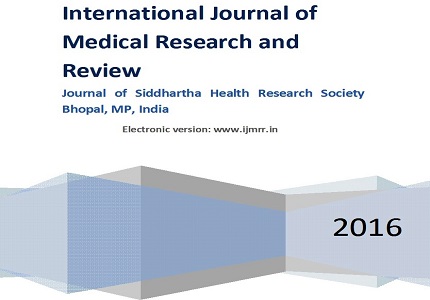Auricular Defects: Autogenous Vs Prosthetic Reconstruction
Abstract
Introduction: Auricular defects and deformities include not only acquired defects attributable to trauma, burns, tumors, piercing defects, scars, and inflammation/allergies, but also congenital auricularmalformations.
Methods: Alternatives for auricular reconstruction include autologous costal cartilage graft, prosthetic reconstruction with adhesives and osseointegrated implants.
Conclusion: Total auricular reconstruction in patient with auricular defects is one of the most challenging problems faced by a reconstructive surgeon as it demands precise surgical technique combined with artistic creativity. Ear reconstruction requires carefully planned procedures. The use of autogenous rib cartilage is the gold standard for microtia reconstruction. Overcoming the limitations of surgical procedures prosthetic rehabilitation can be done successfully. The purpose of this article is to compare the two procedures and discuss their advantages and disadvantages.
Downloads
References
2. Weerda H. Reconstructive surgery of the auricle. Facial Plast Surg. 1988 Oct;5(5):399-410. [PubMed]
3. Tanzer RC. Total reconstruction of the auricle. The evolution of a plan of treatment.PlastReconstr Surg1971; 47(6):523–33. PMID: 5088649. [PubMed]
4. Tanzer RC. The constricted (cup and lop) ear. PlastReconstr Surg1975; 55(4):406–415.PMID: 1118500. [PubMed]
5. Brent B.The correction of mi-rotia with autogenous cartilage grafts: I. The classic deformity.?PlastReconstr Surg. 1980 Jul;66(1):1-12. [PubMed]
6. Firmin F. Ear reconstruction in cases of typical microtia. Personal experience based on 352 microtic ear corrections. ScandJPlastReconstrSurg Hand Surg 1998;32(1):35–47.PMID: 9556819. [PubMed]
7. NagataS. Modification of the stages in total reconstruction of the auricle: part I. Grafting the three-dimensional costal cartilage framework for lobule-type microtia. PlastReconstrSurg 1994;93(2): 221–230.
8. Chauhan DS, Guruprasad Y. Auricular Reconstruction of Congenital Microtia Using autogenous Costal Cartilage: Report of 27 Cases. J Maxillofac Oral Surg. 2012 Mar; 11(1): 47–52.doi: 10.1007/s12663-011-0290-1.
9. Letterman GS, Harding RL. The management of the hairline in ear reconstruction.Plast.Reconstr. Surg. 1956; 18(3):199-207.PMID: 13370369. [PubMed]
10. Yotsuyanagi T, Yokoi K, Nihei Y, Sawada Y. Management of the hairline using a local flap in total reconstruction for microtia.PlastReconstr Surg. 1999 Jul;104(1):41-7. [PubMed]
11. Tjellström. A, Rosenhall. U, Lindström. J, Hallén. O, Albrektsson. , Brånemark P.I. Five-year Experience with Skin-penetrating Bone-anchored implants in the Temporal bone. ActaOtolaryngol 1983; 95(5-6): 568-75. [PubMed]
12. Brown KE.Fabrication of ear prosthesis.J Prosthet Dent. 1969 Jun;21(6):670-6. [PubMed]
13. Wang R. Preoperative auricular wax pattern duplication for surgical template fabrication. J Prosthet Dent 1999;81:634-7. [PubMed]
14. Green WT Jr, Dickens DR.Culture model for investigation of cartilage matrix formation.Surg Forum. 1972;23(0):453-5. [PubMed]
15. Bomhard, J. Veit, Bermueller C et al. Prefabrocation of 3D cartilage constructs: towards a tissue engineering auricle— a model tested in rabbits,” PLoS ONE 2013;8,(8) Article ID e71667.doi:10.1371/journal.pone.0071667. [PubMed]
16. Bichara DA, O'Sullivan NA, Pomerantseva I, Zhao X, Sundback CA, Vacanti JP, Randolph MA.The tissue-engineered auricle: past, present, and future.Tissue Eng Part B Rev. 2012 Feb;18(1):51-61. doi: 10.1089/ten.TEB.2011.0326. Epub 2011 Oct 4.



 OAI - Open Archives Initiative
OAI - Open Archives Initiative


